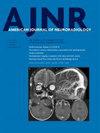基于深度学习的 ASPECTS 算法可提高阅读性能并缩短解读时间。
IF 3.7
3区 医学
Q2 CLINICAL NEUROLOGY
引用次数: 0
摘要
背景和目的ASPECTS 是急性缺血性卒中治疗的一个长期存在且有据可查的选择标准,然而,ASPECTS 的判读对医生来说是一项具有挑战性且耗时的任务,观察者之间存在显著差异。我们进行了一项多阅读器、多病例研究,让阅读器在无深度学习(DL)算法支持和有深度学习算法支持的情况下评估 ASPECTS,以分析该软件对临床医生的表现和解读时间的影响。参考标准由三位可获得基线 CTA 和 CTP 数据的神经放射学专家共同制定。随后,另外八名临床医生(四名典型的 ASPECTS 阅读器和四名资深神经放射科医生)分别在没有 CINA-ASPECTS (Avicenna.AI, La Ciotat, France) 的情况下和在 CINA-ASPECTS (Avicenna.AI, La Ciotat, France) 的协助下分析了 NCCT 扫描,CINA-ASPECTS 是一种基于 DL 的、经 FDA 批准和 CE 认证的算法,旨在自动计算 ASPECTS。结果在软件辅助下,读者基于区域的准确率从 72.4% 提高到 76.5%(P<0.05),ROC AUC 从 0.749 提高到 0.788(P<0.05)。值得注意的是,使用该软件后,所有读者的 ROC AUC 都有所提高。此外,使用该算法后,基于评分的观察者间可靠性和 ASPECTS 评估的相关系数分别提高了 0.222 和 0.087(p<0.0001)。结论在算法的帮助下,读者的分析不仅更加准确,而且速度更快。此外,与参考标准相比,ASPECTS 评估的整体一致性更高、变异性更小、精确度更高。这一新型工具可使医生准确、及时地诊断急性缺血性卒中,从而提高患者选择适当治疗的能力。 ABBREVIATIONSASPECTS = Alberta Stroke Program Early Computed Tomography Score;DL = Deep Learning;EIC = Early Ischemic Changes;ICC = Intraclass Correlation Coefficient;IS = Ischemic Stroke;ROC AUC = Receiver Operating Characteristics Area Under the Curve。本文章由计算机程序翻译,如有差异,请以英文原文为准。
Deep Learning-Based ASPECTS Algorithm Enhances Reader Performance and Reduces Interpretation Time.
BACKGROUND AND PURPOSE
ASPECTS is a long-standing and well documented selection criteria for acute ischemic stroke treatment, however, the interpretation of ASPECTS is a challenging and time-consuming task for physicians with significant interobserver variabilities. We conducted a multi-reader, multi-case study in which readers assessed ASPECTS without and with the support of a deep learning (DL)-based algorithm in order to analyze the impact of the software on clinicians' performance and interpretation time.
MATERIALS AND METHODS
A total of 200 NCCT scans from 5 clinical sites (27 scanner models, 4 different vendors) were retrospectively collected. Reference standard was established through the consensus of three expert neuroradiologists who had access to baseline CTA and CTP data. Subsequently, eight additional clinicians (four typical ASPECTS reader and four senior neuroradiologists) analyzed the NCCT scans without and with the assistance of CINA-ASPECTS (Avicenna.AI, La Ciotat, France), a DLbased FDA-cleared and CE-marked algorithm designed to automatically compute ASPECTS. Differences were evaluated in both performance and interpretation time between the assisted and unassisted assessments.
RESULTS
With software aid, readers demonstrated increased region-based accuracy from 72.4% to 76.5% (p<0.05), and increased ROC AUC from 0.749 to 0.788 (p<0.05). Notably, all readers exhibited an improved ROC AUC when utilizing the software. Moreover, use of the algorithm improved the score-based inter-observer reliability and correlation coefficient of ASPECTS evaluation by 0.222 and 0.087 (p<0.0001), respectively. Additionally, the readers' mean time spent analyzing a case was significantly reduced by 6% (p<0.05) when aided by the algorithm.
CONCLUSIONS
With the assistance of the algorithm, readers' analyses were not only more accurate but also faster. Additionally, the overall ASPECTS evaluation exhibited greater consistency, less variabilities and higher precision compared to the reference standard. This novel tool has the potential to enhance patient selection for appropriate treatment by enabling physicians to deliver accurate and timely diagnosis of acute ischemic stroke.
ABBREVIATIONS
ASPECTS = Alberta Stroke Program Early Computed Tomography Score; DL = Deep Learning; EIC = Early Ischemic Changes; ICC = Intraclass Correlation Coefficient; IS = Ischemic Stroke; ROC AUC = Receiver Operating Characteristics Area Under the Curve.
求助全文
通过发布文献求助,成功后即可免费获取论文全文。
去求助
来源期刊
CiteScore
7.10
自引率
5.70%
发文量
506
审稿时长
2 months
期刊介绍:
The mission of AJNR is to further knowledge in all aspects of neuroimaging, head and neck imaging, and spine imaging for neuroradiologists, radiologists, trainees, scientists, and associated professionals through print and/or electronic publication of quality peer-reviewed articles that lead to the highest standards in patient care, research, and education and to promote discussion of these and other issues through its electronic activities.

 求助内容:
求助内容: 应助结果提醒方式:
应助结果提醒方式:


